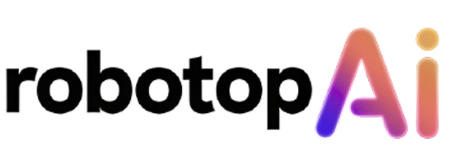Artificial intelligence has moved far beyond research labs and corporate offices. In 2025, it’s woven into our daily routines — sometimes in ways we barely notice. Whether it’s planning a vacation, staying fit, or even cooking dinner, AI is quietly reshaping how we live, work, and relax.
The real surprise? Some of the most useful AI tools aren’t flashy headline grabbers. They’re practical, affordable, and designed to make ordinary life easier. Let’s explore the unexpected ways AI is showing up in everyday life — and why you might want to try some of these tools yourself.
AI for Home & Family Life
Keeping a household running smoothly is no small feat. AI has stepped in with solutions that save time and reduce stress.
-
Smart Meal Planners: Tools like Whisk and Mealime AI suggest weekly menus based on your family’s dietary needs, available ingredients, and even current grocery store promotions.
-
AI Tutors for Kids: Platforms such as Khanmigo (by Khan Academy) adapt lessons in real time, tailoring explanations to your child’s learning style.
-
Parenting Assistants: New apps like Baby+, powered by AI, help track sleep patterns, feeding schedules, and developmental milestones — acting as a digital “second set of eyes” for busy parents.
The common thread? These tools help families reclaim hours each week and reduce decision fatigue.
AI for Lifestyle & Wellness
Self-care is another area where AI is quietly becoming indispensable.
-
Personalized Workout Coaches: Apps like Fitbod AI and Freeletics design workouts based on your fitness level, equipment access, and goals. They update routines as you progress, just like a human trainer.
-
AI Sleep Coaches: Devices such as Eight Sleep analyze your sleep cycles and suggest temperature, lighting, and bedtime adjustments.
-
Mental Wellness Companions: AI-powered apps like Woebot offer conversational therapy support, helping users manage stress or anxiety in between professional appointments.
By personalizing recommendations, AI helps individuals stick to routines that are both effective and sustainable.
AI for Travel & Leisure
Travel can be stressful — but AI is making it smoother.
-
Smart Trip Planners: Tools like GuideGeek and Roam Around AI build custom itineraries in minutes, factoring in budget, interests, and local events.
-
Real-Time Translation: AI-driven translators now work seamlessly through earbuds, breaking language barriers when ordering food, asking for directions, or haggling at markets.
-
AI Itinerary Optimizers: Apps can re-route your travel plan automatically if flights are delayed, saving you the headache of rescheduling.
Instead of hours of research, travelers can now rely on AI to curate experiences tailored to them.
Quirky & Fun AI Tools
Not every AI tool has to be serious. Some are simply delightful:
-
AI Pets: Virtual companions like Replika Pets mimic lifelike interactions, providing comfort and entertainment.
-
AI Social Stylists: Tools suggest outfit combinations based on your wardrobe photos, local weather, and current trends.
-
AI Creators for Fun: Want a personalized bedtime story for your child? Tools like StoryBird AI generate unique tales on demand.
These tools might seem playful, but they showcase just how flexible and creative AI has become.
What to Watch Out For
Of course, not every AI app deserves a spot in your daily routine. Users should stay mindful of:
-
Data Privacy: Many apps collect sensitive information (from health data to shopping habits). Check privacy policies before signing up.
-
Subscription Fatigue: Small monthly fees add up quickly. Review which services truly add value.
-
Over-Reliance: AI is powerful, but it’s not perfect. Use it to support decision-making, not replace common sense.
By approaching AI with curiosity and caution, you can enjoy the benefits without the downsides.
Conclusion: AI as an Everyday Assistant
AI in 2025 isn’t just about futuristic robots or enterprise software. It’s about practical tools that make life smoother — from cooking dinner and planning trips to getting a better night’s sleep.
Most importantly, these tools don’t require technical expertise or big budgets. They’re accessible, intuitive, and often free or low-cost.
The bottom line? AI has quietly become the invisible assistant many of us didn’t know we needed — but now can’t imagine living without.







